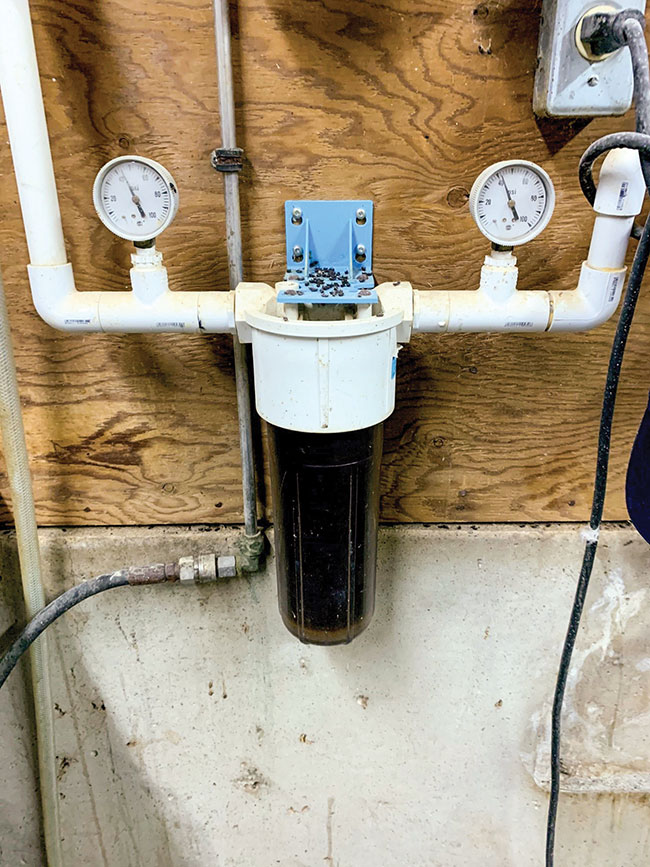
The Brooding Notebook: Always remember to change your water filter
By Dr. Gigi Lin
Features BroilersHigh chick mortality in broiler farm linked to persistent bacterial septicemia. Dr. Gigi Lin's investigation reveals hidden contamination sources.
 “Pseudomonas is a group of bacteria highly resistant to commonly used
antibiotics.”
“Pseudomonas is a group of bacteria highly resistant to commonly used
antibiotics.” Case summary
A broiler farm has experienced high chick mortality due to bacterial septicemia for three consecutive flocks. The brooding assessment revealed contamination of the water system with disease-causing bacteria. The case highlights the importance of routine waterline maintenance and sanitation.
Case history
A flock of four-day-old broiler chicks at Farm A experienced a sudden increase in mortality exceeding three per cent overnight. Postmortem examination showed that most chicks had lesions consistent with systemic bacterial infection, a condition where bacteria enter the bloodstream and cause a widespread infection throughout the body.
This marked the third consecutive flock with high chick mortality due to bacterial septicemia on this farm. In the two previously infected flocks, the producer suspected the chicks died from bacterial infection, specifically E. coli and poor chick quality. To uncover the root cause, the producer was convinced to perform a thorough investigation, including conducting a bacterial culture to rule out other potential pathogens and a comprehensive brooding assessment.
Bacterial culture findings
Bacterial culture of the yolk sacs and hearts revealed high levels of Pseudomonas aeruginosa, a common bacterium that can cause infection and high mortality in poultry, particularly in young chicks, and may even invade fertile eggs. Pseudomonas is a group of bacteria highly resistant to commonly used antibiotics, and it is often not rewarding to treat the flock with antibiotics without other interventions. Therefore, it is extremely important to identify and eliminate the source of contamination.
Intervention and brooding assessment
Working with the producer, I conducted a comprehensive brooding assessment (remember the acronym TFLAWS) to eliminate stressors that predispose the chicks to infection. This group of bacteria grows extremely well in humid conditions; therefore, I gave extra attention to the entire water system.
Before we performed a thorough cleaning and disinfection of the water lines, I selected a few critical points for bacterial swabs to evaluate pathogen levels: the site of water intake and multiple drinker nipples in different sections in the barn. I also sampled the water filter, which had not replaced for over a year.
I detected a high level of P. aeruginosa from the water filter and the drinker nipples, confirming the potential sources of contamination. Following the discovery, we implemented a water system sanitation and maintenance protocol
on the farm.
Other key considerations learned from this case:
- Keep up with routine maintenance of the water system to combat Pseudomonas species and reduce the load of other bacteria that may be harmful to poultry.
- Don’t forget to change the water filter regularly and assess all the critical points throughout the water system.
- Bacterial culture is an inexpensive diagnostic tool that can help to evaluate waterline cleanliness.
- The clinical signs and postmortem lesions of Pseudomonas infection are very similar to other bacteria; hence, it is important to perform routine bacterial culture to obtain an accurate diagnosis.
- Some organisms are highly resistant to antibiotics; thus, antimicrobial susceptibility testing is essential to guide poultry veterinarians to select the most effective treatment regime.
Dr. Gigi Lin is a board-certified poultry veterinarian. She provides diagnostic, research, consultation, continuing education, and field services to all levels of the poultry industry in Western Canada. In this column, she will share case-based reviews of brooding best practices.
Print this page